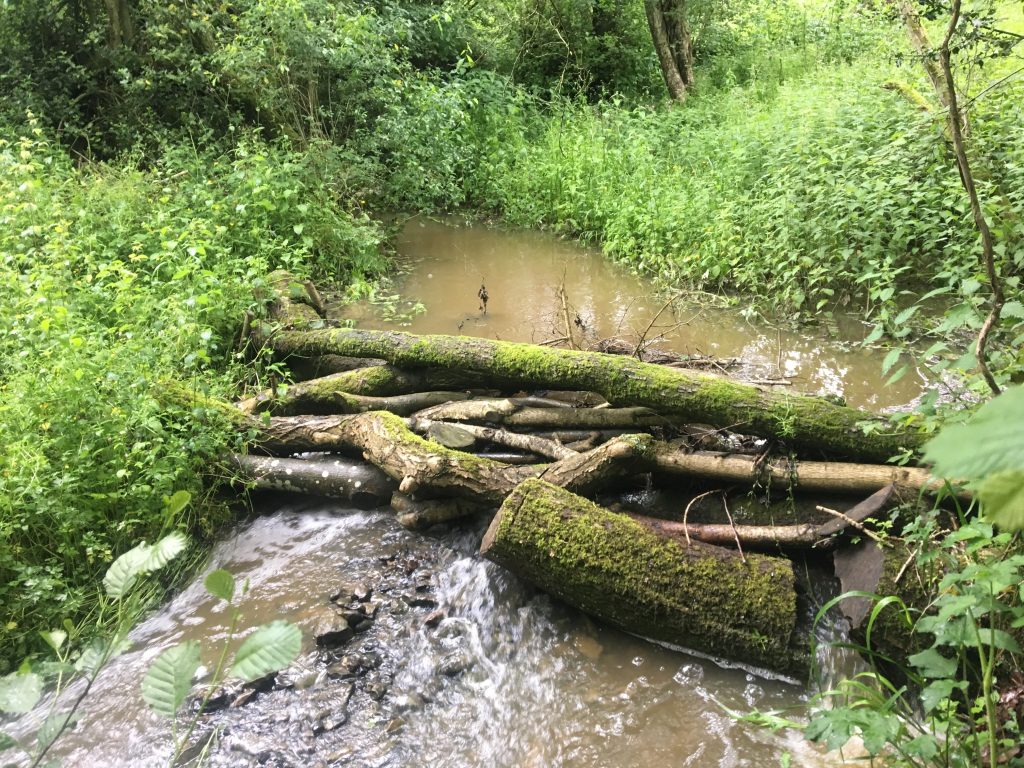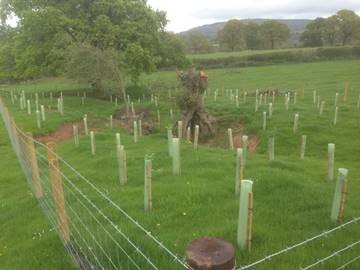Taking action for nature: protecting wildlife, communities and the environment
Shropshire Council is committed to achieving net-zero carbon by 2030, and recognises that an important part of this is addressing the crisis in the natural world.
In Shropshire we are blessed with stunning countryside that we need to protect. But the county is also home to unique habitats that support wildlife and plant species, like the Least Water Lily at Colemere, the only site in England where this can be seen.
Nature also plays a huge role in the battle against climate change by storing carbon in trees, soils and wetlands. Shropshire is home to the internationally significant series of lakes and wetlands known as the Meres and Mosses. Fenn’s, Whixall and Bettisfield Mosses National Nature Reserve is one such wetland. This site alone stores more carbon dioxide in the peat soil than is emitted by Shropshire over four years. The peat soils there store ten times more carbon per hectare than woodland.
As part of its commitment to reach net-zero carbon by 2030, the council is looking at opportunities to reduce the impact of a changing climate and enhance wildlife at the same time.
Dean Carroll, Shropshire Council’s Cabinet member for adult social care, public health and climate change, said:
“The council must and does understand the importance nature and biodiversity has in our battle against climate change, but we must help it recover from the damage humanity has inflicted upon it and we can only do this together.
“As well as this forming a key element of the Shropshire Council Climate Strategy that is currently being produced, we are working with the Marches Nature Partnership and other partners to build on the work already done so we can protect nature and supports its recovery.”
Let’s have a look at some of the projects delivered to date:
Promoting natural wild flower growth
In south west Shropshire it was identified that there were areas of the highway verge, which if cut later than the traditional verge cutting regime, would promote the natural growth of wild flowers.
The aim of this project was to maximise the ‘late cut’, moving from May to late July to allow the vast majority of the wild flowers to flower and seed, whilst ensuring safety for road users.
This resulted in a better environment being provided for wild flower growth across 1865km of road verge – this is roughly the equivalent of travelling from Shrewsbury to Naples!
This was a joint project between Shropshire Council, the National Trust and volunteers.
Steve Davenport, Shropshire Council’s Cabinet member for highways and transport, said:
“I’m very pleased with the outcome of this project. As well as improving the look of the road verges, this project has a hugely positive impact on the future of plant species and wildlife, and is something we will look to continue.
“Thank you to our partners and volunteers in supporting this great project.”
River Clun Recovery Project
This partnership project aimed at improving the quantity, quality and availability of natural resources like trees, water and woodland habitat.
For example, planting 13,300 trees, habitats were enhanced, drainage improved and soil erosion reduced.
17.7km of riparian (influenced by a river or stream) woodland habitat was created or restored. This means that trees and grasses planted can make river banks more stable, reduce floodwater speed and lessen flood peaks downstream, helping to protect our homes and places of work and leisure.
The project also protected 16 sections of eroding river bank, totalling 221km!
In all, the project spent £257,800, enabling partners and volunteers including the Shropshire Hills AONB, the Woodland Trust, Environment Agency and Natural England to deliver great outcomes for nature and landowners.
More information can be found on the Shropshire Hills AONB website.
Shropshire Slow the Flow
The Shropshire Slow the Flow project is a Natural Flood Management (NFM) project focusing on the Corve Dale catchment with the aim of reducing flooding by reducing peak runoff flows and holding back water in the upper catchment. The project is funded by Defra and is one of 15 national NFM pilot projects.
Shropshire Council is managing this scheme with support from the Environment Agency and delivery partners such as Shropshire Wildlife Trust, WSP, Cardiff University and the National Flood Forum.
The project has been running for nearly six years, and in that time we have been able to put various NFM solutions in place:
- Woody debris dams
- Seepage barriers
- Pond enhancements
- Wetland habitat creation
- Contour hedgerow planting
- Tree planting
- Swales and cut-off ditches
- Field aeration.

A woody debris dam
These solutions help reduce surface water, reduce the transportation of pollutants, and provide extra habitat for wildlife which improves biodiversity. We are also working closely with the local community; farmers whose land we are installing these measures on, and flood action groups who have been adversely affected by flooding.

Tree planting
The council has plans to roll out the project into other parts of the county in the future and by working together, through the Shropshire Slow the Flow project, hopes to make a difference to those locally and support NFM becoming a fundamental part of flood management going forward. You can find out more about this project by visiting: https://shropshire.gov.uk/drainage-and-flooding/policies-plans-reports-and-schemes/slow-the-flow/
The announcement comes as the RSBP launch their new Revive Our World campaign. For more information about the campaign, visit https://www.rspb.org.uk/our-work/rspb-news/news/stories/revive-our-world-launch2/.

